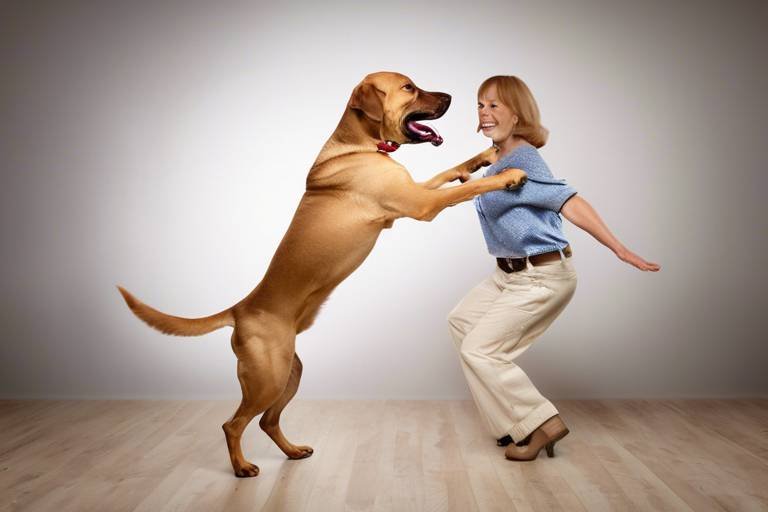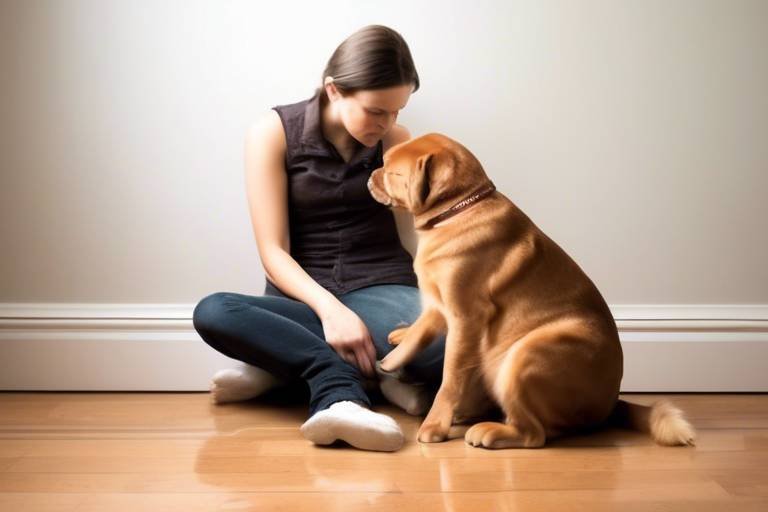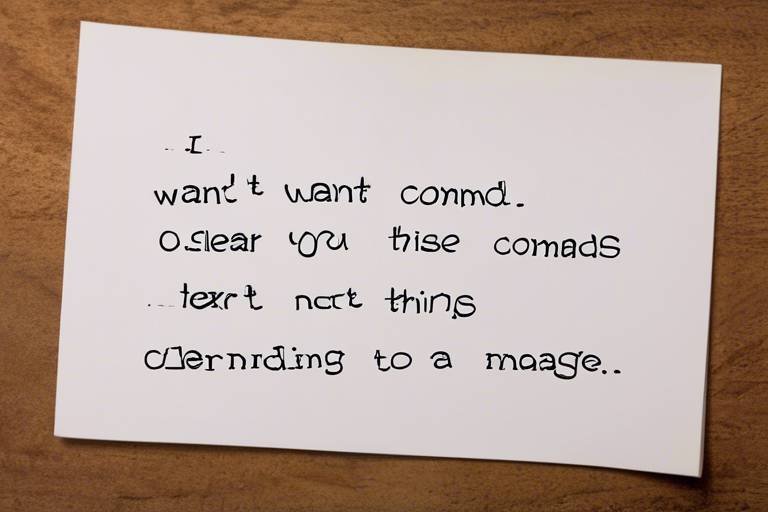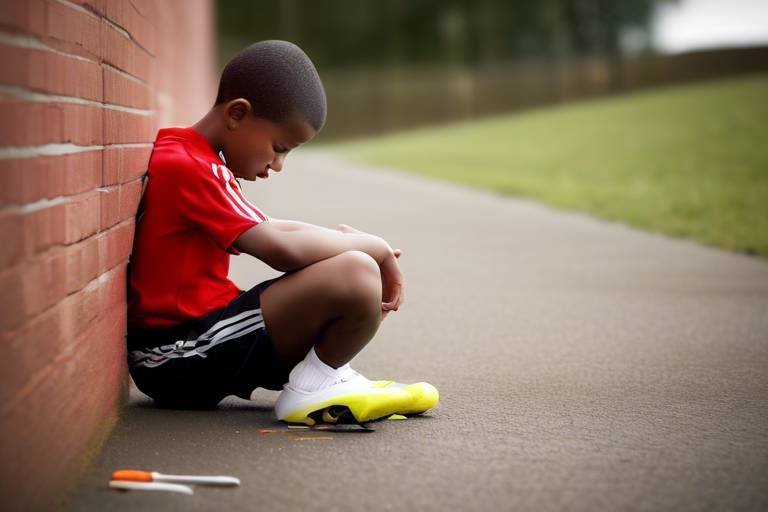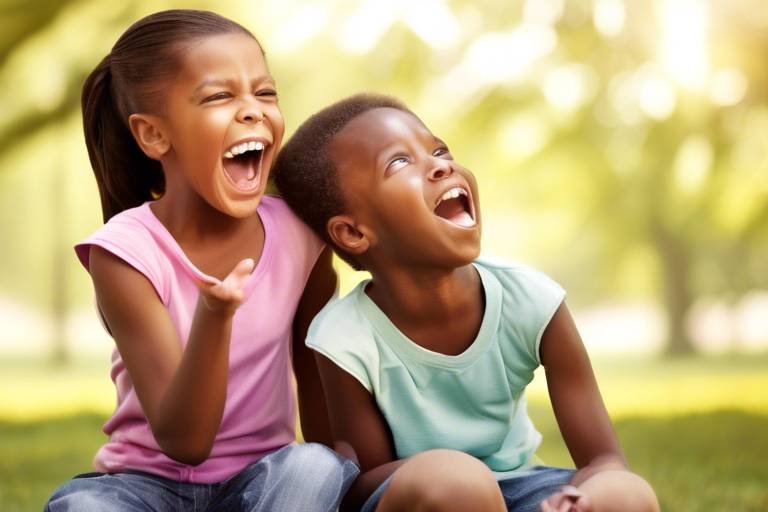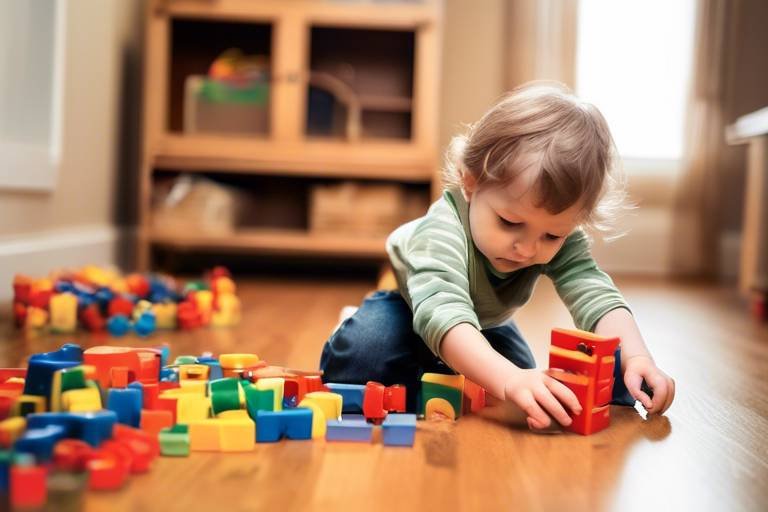Tips for Teaching Your Dog to Dance
Teaching your dog to dance is not just about impressing your friends or going viral on social media; it’s a fantastic way to strengthen the bond between you and your furry companion. Imagine the joy on your dog's face as they twirl and spin to the rhythm of your favorite tunes! In this article, we’ll explore effective strategies that will make the learning process enjoyable for both you and your pup. So, grab your treats, turn up the music, and let's get dancing!
Before you start teaching your dog to dance, it's crucial to understand what motivates them. Every dog is unique, and knowing what drives your furry friend can make a world of difference in the training process. Some dogs are food-driven, while others may respond better to praise or playtime. Here are some common motivators:
- Treats: Most dogs love food, and using small, tasty treats can be a great way to encourage them.
- Praise: Verbal affirmations and petting can boost your dog's confidence and enthusiasm.
- Toys: Some dogs may prefer playing with their favorite toy as a reward.
By identifying your dog's preferred reward, you can tailor your training sessions to keep them engaged and excited. Remember, positive reinforcement is key; the more fun they have, the more likely they are to continue dancing!
The music you choose can significantly impact your dog's energy levels and willingness to participate in dance sessions. Think of it as setting the stage for a performance! When selecting music, consider your dog's personality and rhythm. Some pups may thrive on upbeat, fast-paced songs that get their tails wagging, while others might prefer slower, calming melodies. Here are some tips for picking the perfect tracks:
Different genres can evoke various moods in your dog. For instance:
- Classical: Often soothing, classical music can help calm anxious dogs.
- Pop: Upbeat pop songs can energize your dog, making them more likely to dance around.
- Jazz: The improvisational nature of jazz can inspire spontaneous movements!
Experiment with different styles to see what resonates with your dog. You might be surprised by their preferences!
Understanding the impact of tempo on your dog’s mood is essential. For instance, if you want to encourage high-energy dance moves, opt for upbeat tracks. Conversely, if you’re looking to teach more relaxed movements, calming tunes can help set the right atmosphere. Think of it like choosing the right outfit for a special occasion; the right music can make all the difference!
A well-curated playlist can elevate your training sessions to a whole new level. To create an engaging collection of songs, consider the following:
- Include a mix of genres to keep things fresh.
- Incorporate songs that your dog seems to respond to positively.
- Change the playlist regularly to prevent boredom.
Having a go-to playlist can make your dance sessions feel more like a party, keeping both you and your dog excited to learn new moves!
Just like humans, dogs have different learning styles. Some may be visual learners, while others might be more hands-on. Pay attention to how your dog reacts during training sessions. Do they respond better when they can see you perform the move first, or do they prefer to learn by doing? Adapting your teaching methods to suit your dog's unique personality can enhance the learning experience and lead to faster results.
Before diving into complex routines, it's essential to master some basic dance moves. Think of these as the foundation of your dog's dancing career! Here are a couple of simple steps to get you started:
The spin is a fun and visually appealing move that can really impress your audience. To teach your dog to spin, follow these steps:
- Start by getting your dog's attention with a treat.
- Hold the treat close to their nose and slowly move it in a circular motion.
- As they follow the treat, they will naturally begin to spin. When they complete the spin, reward them immediately!
Repeat this process, gradually adding a verbal cue like "spin" to help them associate the command with the action.
Teaching your dog to bow adds charm to any dance routine! To encourage this adorable move, try the following:
- Start with your dog standing. Hold a treat in front of their nose.
- Slowly lower the treat towards the ground while pulling it slightly forward. This will encourage your dog to lower their front legs while keeping their back end up.
- As soon as they bow, reward them with the treat and lots of praise!
With patience and practice, your dog will be bowing like a pro in no time!
Combining tricks with dance can create an entertaining performance that showcases your dog's personality and skills. Think of it as adding a little flair to your routine! You can integrate various tricks such as rolling over, jumping through hoops, or even weaving between your legs. The key is to keep it fun and engaging, ensuring your dog enjoys every moment of the performance.
Q: How long should I train my dog each day?
A: Short, frequent sessions (around 5-10 minutes) are often more effective than longer sessions. Keep it fun and lively!
Q: What if my dog doesn’t seem interested in dancing?
A: Try different types of music and rewards. Sometimes, a little experimentation can spark their interest!
Q: Can older dogs learn to dance?
A: Absolutely! Dogs of all ages can learn new tricks and dance moves. Just be mindful of their physical limitations.
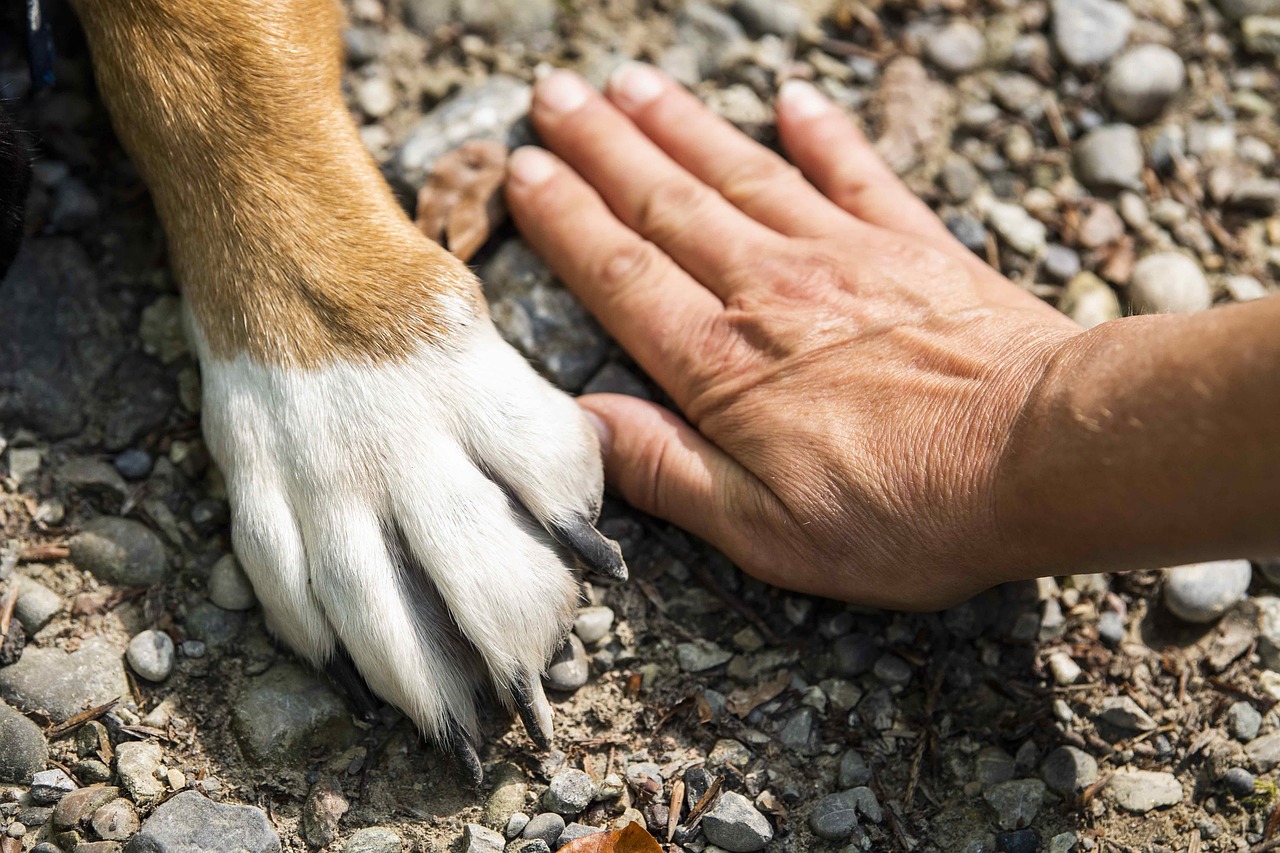
Understanding Your Dog's Motivation
When it comes to teaching your dog to dance, understanding their motivation is absolutely key. Just like us, dogs have their own unique preferences and desires that can make or break their enthusiasm for learning new tricks. So, what gets your furry friend wagging their tail and ready to boogie? It could be treats, praise, or even their favorite toy! By tapping into what excites your dog, you’ll create a fun and engaging environment that makes learning feel less like a chore and more like a game.
First off, let’s talk about rewards. Dogs are incredibly motivated by food, and using tasty treats can be a game-changer. Think about it: if you were trying to learn a new dance move and someone dangled a piece of cake in front of you, wouldn’t you be more inclined to try? The same goes for your pup! Here are some popular types of rewards to consider:
- High-Value Treats: These are special treats that your dog absolutely loves. They can be small bits of chicken, cheese, or even store-bought training treats that are designed to grab your dog’s attention.
- Praise and Affection: Sometimes, a simple “Good boy!” or a belly rub can be just as motivating as food. Dogs thrive on positive reinforcement and love to feel appreciated.
- Playtime: Incorporating a game of fetch or tug-of-war as a reward can be incredibly effective. It’s a way to make training feel like playtime!
But wait, it’s not just about the rewards. You also need to consider your dog’s energy levels and personality. Some dogs are naturally more energetic and eager to learn, while others may need a little more coaxing. For instance, if your dog is a bit shy or anxious, starting with gentle encouragement and low-pressure sessions can help build their confidence. On the other hand, if you have a high-energy pup, they might thrive in a lively environment filled with upbeat music and exciting rewards.
Another essential aspect to consider is the timing of your rewards. Dogs learn best when they receive immediate feedback. So, if your dog performs a move correctly, make sure to reward them right away. This helps them associate the action with the reward, reinforcing the behavior you want to see. Think of it like a dance party where your dog is the star! Every time they nail a move, you’re there cheering them on with treats and praise, making them want to keep dancing.
Lastly, don’t forget to keep the training sessions short and fun. Dogs have shorter attention spans than we do, so it’s essential to keep things lively. Aim for 5-10 minute sessions filled with enthusiasm and positivity. This way, your dog will associate learning with fun, making them more likely to engage and participate. Remember, the goal is to enhance your bond and have a great time together!
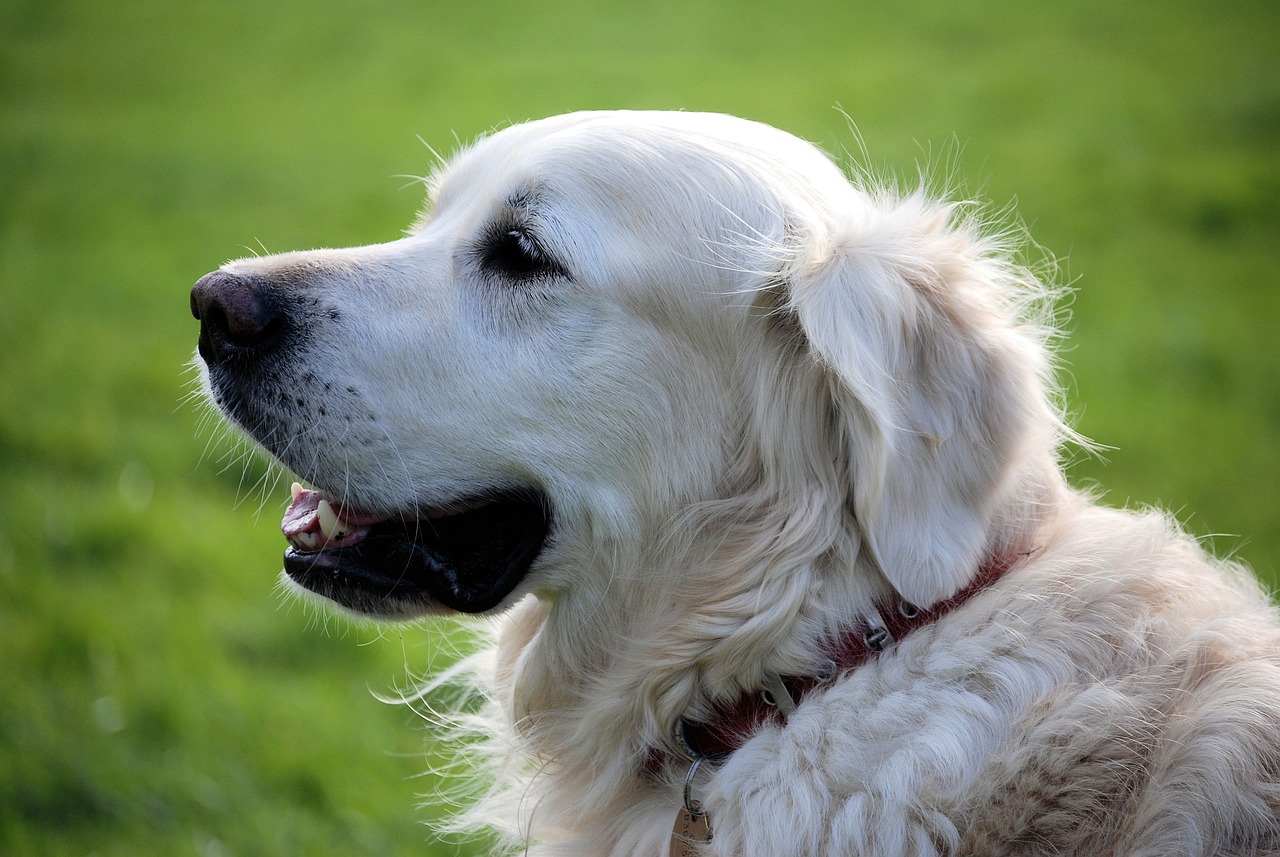
Choosing the Right Music
When it comes to teaching your dog to dance, the music you choose plays a pivotal role in creating the right atmosphere. Think of music as the heartbeat of your training sessions; it sets the rhythm and mood for both you and your furry friend. But how do you select the perfect tunes? Well, it’s all about understanding your dog's personality and energy levels. Just like humans, dogs have their own preferences, and finding a track that resonates with them can make all the difference.
Start by observing your dog's reactions to different types of music. Do they perk up when a lively pop song plays, or do they seem more relaxed with soothing classical melodies? This can give you valuable insight into their musical tastes. For instance, some dogs might jump and wag their tails to upbeat tunes, while others might prefer soft, calming sounds that help them feel at ease. Pay attention to these cues, as they can guide you in crafting a playlist that keeps your dog engaged and motivated.
Here’s a quick rundown of how different genres can impact your dog's dance experience:
| Music Genre | Effect on Dog |
|---|---|
| Pop | Energetic and playful, great for high-energy routines |
| Classical | Calming and soothing, perfect for relaxation exercises |
| Jazz | Swinging rhythms can encourage playful movements |
| Rock | Upbeat and exciting, ideal for lively performances |
Now, let’s talk about tempo. The speed of the music can greatly influence your dog's mood and energy levels. Upbeat music can get your dog excited and ready to move, while calming tunes can help them relax and focus. It’s essential to match the tempo to the type of dance moves you’re teaching. For example, if you’re working on a lively spin, an energetic beat will encourage your dog to really get into it. On the other hand, if you’re teaching a bow or a more graceful move, slow, soothing music might be the way to go.
Creating a playlist is an excellent way to ensure you have the right tracks ready for each training session. Here are a few tips for assembling your dance playlist:
- Mix it up: Include a variety of genres and tempos to keep things interesting.
- Observe your dog: Change songs based on your dog's reactions; if they seem to love a particular track, use it more often!
- Keep it short: Aim for songs that are around 2-3 minutes long, so your sessions stay engaging without overwhelming your dog.
In conclusion, choosing the right music for your dog's dance training is all about experimenting and observing. With a little creativity and a keen ear, you can create an energizing and enjoyable atmosphere that enhances your training sessions. Remember, the ultimate goal is to have fun together, so let the music guide your movements and your dog's enthusiasm!
Types of Music for Dancing
When it comes to teaching your dog to dance, the type of music you choose can make a world of difference. Just like humans, dogs can respond to different genres and tempos in unique ways. Imagine trying to get your furry friend to groove to a slow ballad—chances are, they’ll just look at you like you’re crazy! Instead, selecting the right tunes can elevate the entire experience, turning your living room into a dance floor.
So, what types of music should you consider? Here’s a quick breakdown:
- Classical: While it may seem counterintuitive, classical music can have a calming effect on some dogs, making it easier for them to focus during training sessions.
- Pop: Upbeat pop songs can ignite your dog's energy, encouraging them to jump, spin, and move around with enthusiasm.
- Jazz: The improvisational nature of jazz can stimulate a playful attitude in your dog, prompting spontaneous movements.
- Electronic Dance Music (EDM): With its fast beats and energizing rhythms, EDM can really get your dog pumped up and ready to dance.
Now, let’s dive deeper into how each genre can influence your dog's performance. For instance, classical music might work wonders for a dog that is naturally calm and composed, making them more receptive to learning new moves. On the other hand, if you have a high-energy pup, pop or EDM can unleash their inner dancer, encouraging them to express themselves through movement.
Additionally, don’t underestimate the power of tempo. A fast-paced song can inspire quick, lively movements, while slower tunes might be better suited for graceful, flowing actions. The key is to experiment with different styles and see how your dog reacts. You might find that they have a favorite genre that gets their tail wagging!
To help you out, here’s a simple table that summarizes the effects of different music types on your dog's mood and energy levels:
| Music Genre | Effect on Dog | Best For |
|---|---|---|
| Classical | Calming | Focus during training |
| Pop | Energetic | Encouraging lively movements |
| Jazz | Playful | Spontaneous dancing |
| EDM | Exciting | High-energy routines |
Ultimately, the best approach is to create a playlist that reflects your dog's personality and preferences. This way, you can ensure that your dance sessions are not only productive but also filled with joy and fun! So, crank up the tunes, and let the dancing commence!
Upbeat vs. Calming Music
When it comes to teaching your dog to dance, the type of music you choose plays a pivotal role in shaping their mood and performance. Think of music as the backdrop to a beautiful painting; without the right colors, the masterpiece just doesn't come together. Upbeat music can energize both you and your furry friend, making training sessions feel more like a party than a chore. On the other hand, calming music can help your dog relax, allowing them to focus better on learning new moves. It’s all about finding that perfect balance!
Imagine this: you’re in the living room, ready to show off your dog’s new dance moves. You hit play on a lively pop song, and suddenly your pup is bouncing around, tail wagging, and eager to join in. This is the magic of upbeat music. It creates an atmosphere of excitement and joy, encouraging your dog to engage with you and the dance routine. Conversely, when it’s time to wind down or practice some gentle moves, calming music can set the stage for a more relaxed environment. It’s like having a cozy blanket wrapped around you while you both enjoy some quiet time together.
To illustrate the impact of music tempo, consider the following table:
| Type of Music | Effects on Dog | Best Use |
|---|---|---|
| Upbeat Music | Increases energy and enthusiasm | Training sessions, playtime |
| Calming Music | Reduces anxiety and promotes focus | Relaxation, gentle practice |
Understanding the tempo of the music is essential. For instance, faster beats can stimulate excitement, making your dog more likely to jump, twirl, and show off their best moves. However, if you notice your dog getting a bit too hyper, switching to a slower, calming tune can help them regain focus and composure. It’s like a dance-off between energy and tranquility!
Incorporating both types of music into your training routine can be a game-changer. Start with upbeat tracks to get your dog excited and engaged. Then, as you progress to more intricate dance steps, transition to calming music to help them concentrate. This dynamic approach can keep your training sessions fresh and enjoyable, ensuring that your dog remains motivated and eager to learn.
Ultimately, the key is to observe your dog. Pay attention to how they respond to different types of music. Some dogs may thrive on high-energy beats, while others may prefer the serenity of soft melodies. By tailoring your music choices to your dog’s preferences, you’ll create a more effective and enjoyable learning experience for both of you!
- Can any type of music be used for dog training? While dogs can respond to various music genres, it's best to stick with upbeat and calming tunes that match their energy levels.
- How do I know if my dog prefers upbeat or calming music? Observe their behavior during training sessions; if they seem more lively with faster beats, they likely enjoy upbeat music.
- Is it necessary to have a playlist? Having a curated playlist can help maintain the right mood and keep training sessions engaging.
Creating a Playlist
Creating a playlist for your dog's dance sessions is not just about slapping together a few tunes; it's about curating an experience that energizes both you and your furry friend. Think of it as crafting a soundtrack to your own little dance party! A well-thought-out playlist can keep your dog engaged, excited, and ready to groove, making training sessions feel less like work and more like play.
When assembling your playlist, consider the tempo and mood of the songs. Upbeat tracks can really get the energy flowing, while slower melodies can help your dog relax and focus. You might want to start with a few high-energy songs to get your dog moving and then transition to more calming tracks as you practice some of the slower dance moves. This dynamic approach not only keeps your dog interested but also helps them understand the rhythm of the dance.
Here are some tips to help you create the perfect playlist:
- Mix Genres: Don't limit yourself to one type of music. Mix it up with different genres like pop, rock, and even classical. You might find that your dog responds better to certain styles.
- Watch Your Dog's Reaction: Pay attention to how your dog reacts to different songs. If they perk up or start moving when a particular track plays, that’s a sign it should make the cut!
- Keep it Short: Aim for a playlist that lasts around 20-30 minutes. This way, you can keep training sessions focused without overwhelming your pup with too much music.
- Update Regularly: Just like our taste in music evolves, so can your dog's preferences. Regularly update your playlist to keep things fresh and exciting.
Once you've got your playlist ready, play it during your training sessions and observe how your dog responds. You might even find that certain songs become cues for specific moves! Imagine your dog spinning with joy as soon as their favorite upbeat track starts playing. It's all about creating a fun and interactive environment that enhances your bond with your pet.
Remember, the ultimate goal is to have fun while teaching your dog to dance. So, let the music play, and watch as your furry friend transforms into a dancing superstar!
Recognizing Your Dog's Learning Style
Every dog is unique, much like humans, and understanding your dog's individual learning style can make a world of difference when it comes to teaching them new tricks or dance moves. Some dogs might respond better to visual cues, while others might thrive on auditory signals or hands-on guidance. To effectively teach your furry friend to dance, you need to tap into their natural instincts and preferences.
One effective way to identify your dog's learning style is through observation. Watch how your dog reacts to different training methods. For example, does your dog seem more engaged when you use treats or toys as rewards? Or do they perk up when you use enthusiastic verbal praise? Here are a few common learning styles you might encounter:
- Visual Learners: These dogs learn best through visual cues. They respond well to hand signals and body language. If your dog seems to pick up on gestures quickly, they might be a visual learner.
- Auditory Learners: Some dogs are more attuned to sounds and vocal commands. If your dog reacts positively to your voice or specific sounds, try using them during your training sessions.
- Kinesthetic Learners: These dogs learn through touch and movement. They may require more physical interaction, such as guiding them through a move with your hands or encouraging them to mimic your actions.
Once you've identified your dog's learning style, you can tailor your training sessions to suit their needs. For instance, if you have a visual learner, you might want to incorporate more gestures and demonstrations. On the other hand, if your dog responds better to sounds, consider using a clicker or specific verbal cues consistently. This personalized approach not only enhances the learning experience but also strengthens the bond between you and your dog.
Moreover, keep in mind that dogs can exhibit a combination of learning styles. It's essential to remain flexible and adjust your teaching methods as needed. If you notice that your dog is struggling with a particular move, try switching up your approach. This adaptability will help maintain your dog's interest and enthusiasm during training sessions, making the experience more enjoyable for both of you.
In conclusion, recognizing your dog's learning style is a crucial step in teaching them to dance effectively. By observing their reactions and adapting your training methods accordingly, you can create a fun and engaging environment that fosters learning and strengthens your bond. Remember, patience and consistency are key, so take your time and enjoy the process!
Q: How can I tell if my dog prefers visual, auditory, or kinesthetic learning?
A: Observe how your dog responds to different training methods. If they react positively to hand signals, they may be a visual learner. If they respond well to verbal commands, they might be an auditory learner. If they need physical guidance, they could be a kinesthetic learner.
Q: What should I do if my dog isn't responding to my training methods?
A: If your dog isn't responding, it may be time to reassess their learning style. Try different approaches and be patient. Sometimes, a simple change in your technique can make all the difference.
Q: How long should I train my dog each day?
A: Short, frequent training sessions are often more effective than long ones. Aim for 5-10 minute sessions several times a day to keep your dog engaged and prevent them from becoming overwhelmed.
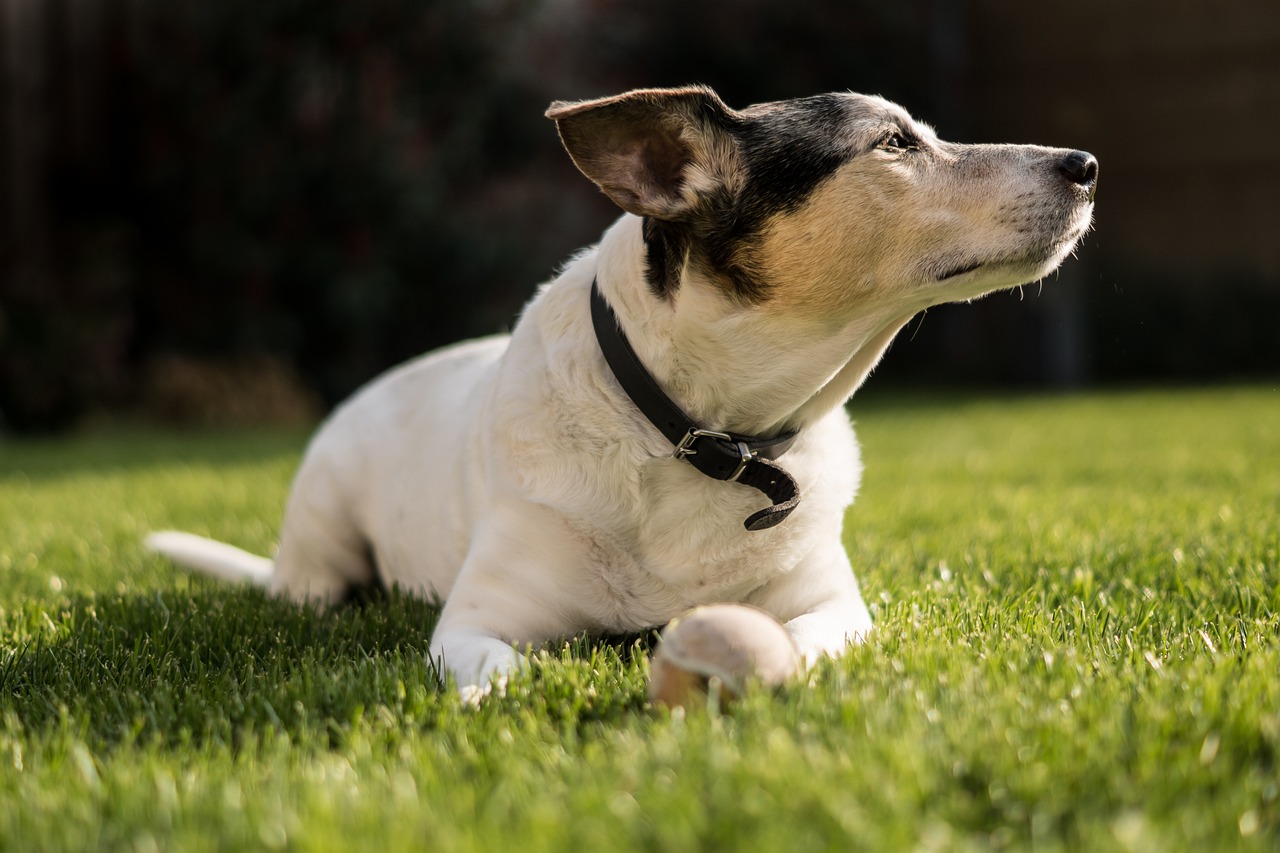
Basic Dance Moves to Start With
Before you and your furry companion can take the stage with a dazzling performance, it's essential to start with the basics. Just like humans need to learn fundamental dance steps before busting out intricate moves, your dog also requires a solid foundation to build upon. Mastering these basic dance moves not only enhances your dog's coordination but also boosts their confidence, making the learning process enjoyable and rewarding.
One of the most exciting aspects of teaching your dog to dance is that it’s not just about the moves; it’s about the connection you create together. Think of it as a fun bonding experience, where both of you are learning and growing side by side. So, let’s dive into some basic dance moves that will get your pup grooving in no time!
The spin is a fantastic and visually appealing move that can add a lot of flair to your dog's dance routine. To teach your dog to spin, start by luring them with a treat. Hold the treat close to their nose and slowly move it in a circular motion. As your dog follows the treat, they will naturally begin to turn in a circle. Once they complete the spin, reward them immediately with the treat and lots of praise. Repeat this several times until your dog associates the motion with the reward.
Here’s a simple breakdown of the steps:
- Start with your dog in a standing position.
- Hold a treat in front of their nose.
- Move the treat in a circular motion to encourage them to follow.
- Once they complete the spin, reward them with the treat and praise.
- Repeat until they can perform the spin on command.
Teaching your dog to bow is not only charming but also adds a delightful touch to any dance routine. To get started, have your dog in a standing position. Hold a treat in front of their nose and slowly lower it towards the ground, encouraging your dog to lower their front legs while keeping their rear end up. This position mimics a bow and is often a natural movement for dogs.
To reinforce this behavior, use a command like “bow” as they lower themselves. Once they achieve the bow position, reward them with the treat and lots of positive reinforcement. Consistency is key here, so practice regularly until your dog can perform the bow on cue.
Here’s a quick summary of how to teach the bow:
- Start with your dog standing.
- Hold a treat near their nose and lower it toward the ground.
- Encourage them to lower their front legs while keeping their back legs up.
- Use the command “bow” and reward them once they perform the action.
- Practice until they can bow on command without the treat.
These basic moves serve as the building blocks for more complex routines. As your dog becomes comfortable with these steps, you can gradually introduce additional tricks and dance moves, creating a fun and engaging performance that showcases both your talents. Remember, the key to success is patience and positive reinforcement; celebrate every small victory along the way!
Q: How long should I practice with my dog each day?
A: Short, frequent sessions of about 5-10 minutes are ideal. Dogs have short attention spans, so keeping training sessions brief and fun helps maintain their interest.
Q: What if my dog doesn’t seem interested in dancing?
A: Every dog has different interests. Try experimenting with various rewards, like toys or playtime, to see what motivates your dog the most. You can also try different types of music to create a more engaging atmosphere.
Q: Can I teach an older dog to dance?
A: Absolutely! Dogs of all ages can learn new tricks. Just be mindful of their physical limitations and adjust your training methods accordingly.
Q: How can I make dancing more enjoyable for my dog?
A: Incorporate playtime, praise, and treats into your training. Make sure to keep the atmosphere light and fun, and don’t forget to celebrate your dog’s achievements, no matter how small!
Teaching the Spin
Teaching your dog to spin is not only a fantastic way to impress your friends but also a delightful way to bond with your furry companion. Imagine your dog twirling around joyfully, showcasing their skills while you both share a laugh. The spin is a simple yet visually captivating move that can be the foundation for more complex dance routines. To get started, you'll need some patience, a few tasty treats, and, most importantly, a positive attitude!
First, find a quiet space where you and your dog can focus without distractions. It's essential to create an environment that encourages learning. Begin by holding a treat close to your dog's nose to capture their attention. Slowly move the treat in a circular motion around your dog's head. As they follow the treat, they will naturally start to turn. When your dog completes a full spin, immediately reward them with the treat and lots of praise. This positive reinforcement is crucial, as it helps your dog associate the action with a happy experience.
Here’s a quick breakdown of the steps to teach the spin:
- Step 1: Get your dog's attention with a treat.
- Step 2: Move the treat in a circular motion, encouraging your dog to follow it.
- Step 3: Once they complete the spin, reward them with the treat and praise.
- Step 4: Repeat the process, gradually introducing a verbal cue like "spin" as they start to understand the action.
As your dog becomes more comfortable with the spin, you can start to phase out the treat, rewarding them intermittently instead. This method helps to keep your dog motivated while preventing them from becoming reliant on treats. Remember, practice makes perfect! Spend a few minutes each day working on the spin, and soon enough, your dog will be twirling like a pro.
It's also important to be aware of your dog's energy levels. If they seem tired or uninterested, take a break. Training should be a fun and enjoyable experience for both of you, so don’t push them too hard. If your dog struggles with the spin, try breaking it down into smaller steps or even using a clicker to mark the desired behavior. Each dog is unique, and some may take longer to grasp the concept than others.
Incorporating the spin into a dance routine can make for an entertaining performance. You can combine it with other moves, like the bow or a jump, to create a visually appealing sequence. This not only showcases your dog's talents but also enriches your time together, strengthening the bond you share.
Q: How long will it take for my dog to learn to spin?
A: The time it takes for a dog to learn the spin can vary widely based on their age, breed, and previous training experience. Some dogs may grasp the concept in just a few sessions, while others may need a few weeks of consistent practice.
Q: What if my dog seems confused or frustrated?
A: If your dog appears confused, it’s essential to take a step back. Simplify the task, perhaps by breaking it down into smaller movements, and ensure you’re using plenty of positive reinforcement to keep the experience enjoyable.
Q: Can I teach my dog to spin in both directions?
A: Absolutely! Teaching your dog to spin in both directions can be a fun challenge. Start with one direction until they master it, then introduce the opposite direction using the same techniques.
With patience and practice, your dog will not only learn to spin but will also enjoy the process, making your training sessions a joyful experience for both of you. So grab those treats, turn up the music, and let the dancing begin!
Introducing the Bow
Teaching your dog to bow is not just about adding a cute trick to their repertoire; it's about creating a delightful moment that showcases their personality and your bond. Imagine your furry friend, tail wagging, gracefully lowering their front legs while keeping their rear end up—it's a sight that can melt anyone's heart! But how do you get to this adorable display? Let's break it down step by step.
First, you need to get your dog’s attention. Use a treat that they absolutely love—something irresistible, like small pieces of chicken or cheese. Hold the treat in front of their nose, and then slowly move it down towards the ground, between their front paws. The goal here is to encourage them to lower their front end while keeping their back end up. It’s a bit like leading them into a gentle stretch, and most dogs will instinctively follow the treat!
As your dog begins to lower their head and front legs, use a command like “bow” or “take a bow.” Consistency is key! Every time they perform the action, reward them with praise and the treat. This positive reinforcement will help them associate the command with the action. Remember, patience is crucial; some dogs may catch on quickly, while others might need a little more time to understand what you want them to do.
Once your dog starts to get the hang of it, you can begin to phase out the treat. Instead, try using your voice and affection as rewards. This is where the magic happens! Your dog will start to perform the bow on cue, and you’ll be amazed at how proud they look doing it. It’s like they’re putting on a little performance just for you!
To help you visualize the process, here’s a simple table outlining the steps:
| Step | Action | Reward |
|---|---|---|
| 1 | Get your dog’s attention with a treat. | Use a verbal cue like “bow.” |
| 2 | Move the treat down towards the ground. | Reward with the treat when they lower. |
| 3 | Encourage them to stay in the position. | Praise them verbally. |
| 4 | Gradually phase out the treat. | Use affection and praise as rewards. |
As you practice, make sure to keep the sessions short and fun. Dogs have a limited attention span, and you want to keep them excited about learning. If they seem distracted or frustrated, take a break and come back to it later. Just like us, they learn best when they’re having fun!
Once your dog masters the bow, you can incorporate it into your dance routines. This charming move will not only impress your friends and family but also strengthen the bond between you and your dog. Just think about it—your dog performing a perfect bow at the end of a dance routine is a showstopper!
So, are you ready to get started? Grab those treats, put on your favorite tunes, and let the dancing begin!
- How long does it take to teach my dog to bow? Every dog learns at their own pace. Some may catch on in a few sessions, while others may take a couple of weeks.
- What if my dog doesn’t seem interested? Try using higher-value treats or varying your training environment. Sometimes a change of scenery can spark their interest!
- Can I teach my dog to bow without treats? Yes! You can use toys or verbal praise as motivation, but treats often yield quicker results.
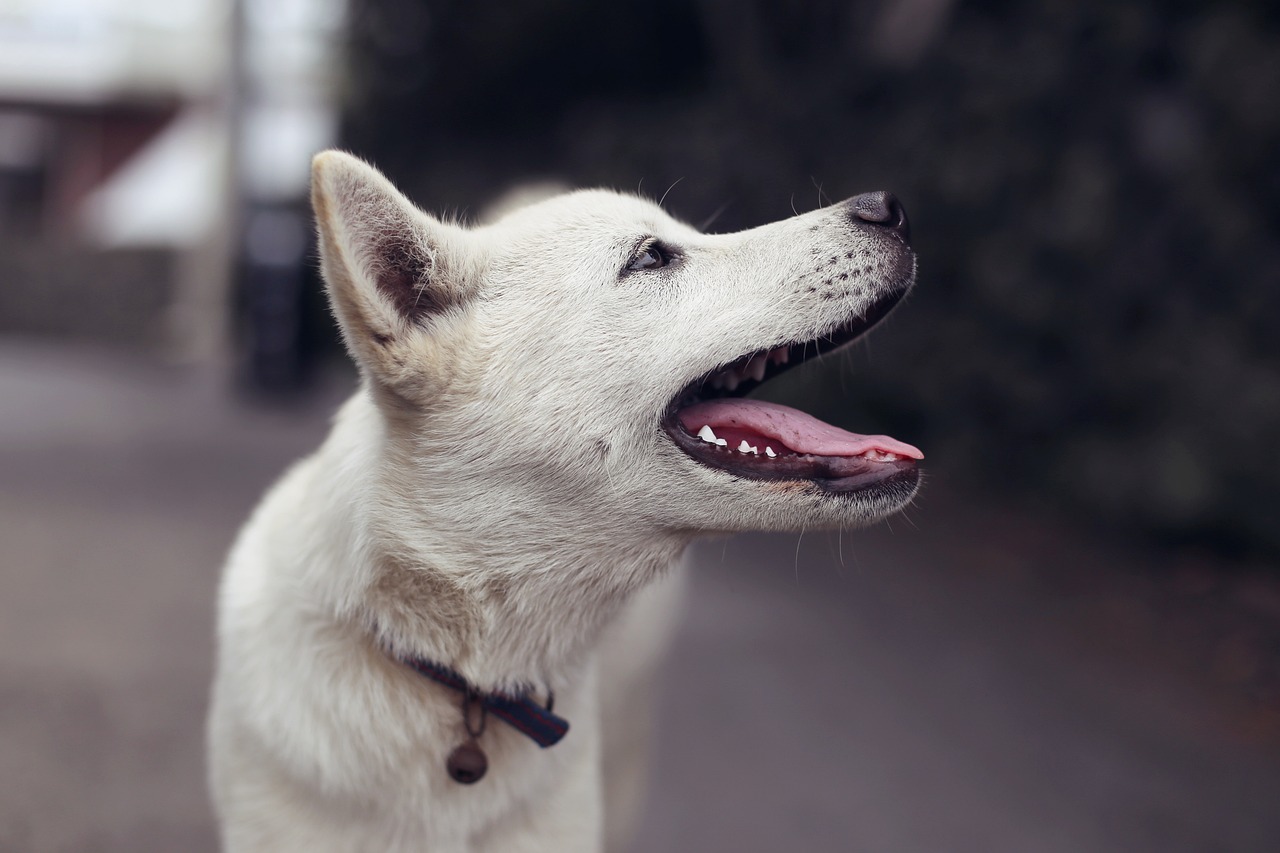
Incorporating Tricks into Dance Routines
When it comes to making your dog's dance routine truly captivating, incorporating tricks is the way to go! Not only do tricks add flair and excitement, but they also showcase your dog's intelligence and agility, turning an ordinary performance into a spectacular show. Think about it: just like a magician wows the crowd with unexpected illusions, your dog can dazzle with playful tricks that leave everyone cheering for more!
To get started, consider the tricks your dog already knows and how they can be seamlessly integrated into dance movements. For instance, if your dog can roll over, why not combine that with a spin? As your dog spins, you can cue the roll over at the peak of the spin, creating a stunning visual effect. The key is to maintain a smooth flow between dance moves and tricks, ensuring that they complement each other rather than disrupt the rhythm.
Here are a few popular tricks you might want to incorporate into your dance routine:
- High Five: This trick can be a fun way to engage with your dog while dancing. You can teach your dog to give you a high five during a pause in the music, adding a playful touch to the performance.
- Twirl: This is a perfect addition to any dance routine. It allows your dog to show off their agility while moving in sync with the music.
- Jump: Incorporating jumps can elevate the energy of your routine. Just be sure to keep the jumps safe and appropriate for your dog's size and abilities.
As you practice, remember to use positive reinforcement. Reward your dog with treats, praise, or playtime whenever they successfully incorporate a trick into the dance. This not only boosts their confidence but also strengthens the bond you share. It’s like a dance party where everyone is having a blast!
Moreover, timing is everything. Pay attention to the music's beats and transitions. You want to hit those cues just right. For example, if there's a crescendo in the music, that might be the perfect moment for a big trick, like a jump or spin. This creates a dramatic effect that can leave your audience in awe.
Don’t forget to keep the sessions lighthearted and fun. Dogs can pick up on our energy, so if you're excited, they'll be excited too! Celebrate the small victories, and don't worry if things don’t go perfectly at first. Just like any great performance, practice makes perfect, and every little step brings you closer to a fantastic dance routine.
Incorporating tricks into your dog's dance routine not only enhances the performance but also makes the training sessions more enjoyable. It’s a win-win situation! So grab your favorite tunes, get your dog moving, and let the dance party begin!
Q1: How long should I practice with my dog each day?
A: Aim for short, engaging sessions of about 10-15 minutes. This keeps your dog focused and prevents them from getting bored.
Q2: What if my dog doesn’t seem interested in dancing?
A: Try different types of music or incorporate their favorite toys. Sometimes, a little creativity can spark their interest!
Q3: Can all dogs learn to dance?
A: Yes! While some breeds may naturally enjoy movement more than others, with patience and encouragement, any dog can learn to dance.
Frequently Asked Questions
- Can any dog learn to dance?
Absolutely! Most dogs can learn to dance, regardless of their breed or age. The key is to understand your dog's personality and motivation. With patience, practice, and the right rewards, your furry friend will be twirling in no time!
- What type of music is best for dog dancing?
Choosing the right music can make a world of difference! Upbeat and energetic tunes usually get dogs excited and moving. However, calming music can be beneficial for relaxation and focus during training sessions. Experiment with different genres to see what gets your pup grooving!
- How long should I train my dog each day?
Short, fun training sessions are the way to go! Aim for about 10 to 15 minutes a day. This keeps your dog engaged without overwhelming them. Consistency is key, so daily practice will help reinforce what you've taught!
- What are some basic dance moves I can teach my dog?
Start with simple moves like the spin and the bow. These are not only easy for your dog to learn but also look adorable when performed! Once your dog masters these, you can gradually introduce more complex routines.
- How can I keep my dog motivated during training?
Rewards are your best friend! Use treats, toys, or even praise to keep your dog excited about learning. Make sure to celebrate their successes, no matter how small, as this will encourage them to keep trying!
- Is it normal for my dog to get distracted during training?
Yes, it's completely normal! Dogs can get easily distracted by their surroundings. If this happens, try moving to a quieter area or using higher-value rewards to regain their focus. Patience is key!
- Can I incorporate tricks into my dog's dance routine?
Definitely! Adding tricks like rolling over or jumping can make your dance routine even more entertaining. Just ensure that your dog is comfortable with the tricks before integrating them into the dance.
- What if my dog doesn't seem to enjoy dancing?
Not every dog will take to dancing right away, and that's okay! Pay attention to their body language. If they seem stressed or disinterested, it might be best to take a break or try a different activity that they enjoy more.

